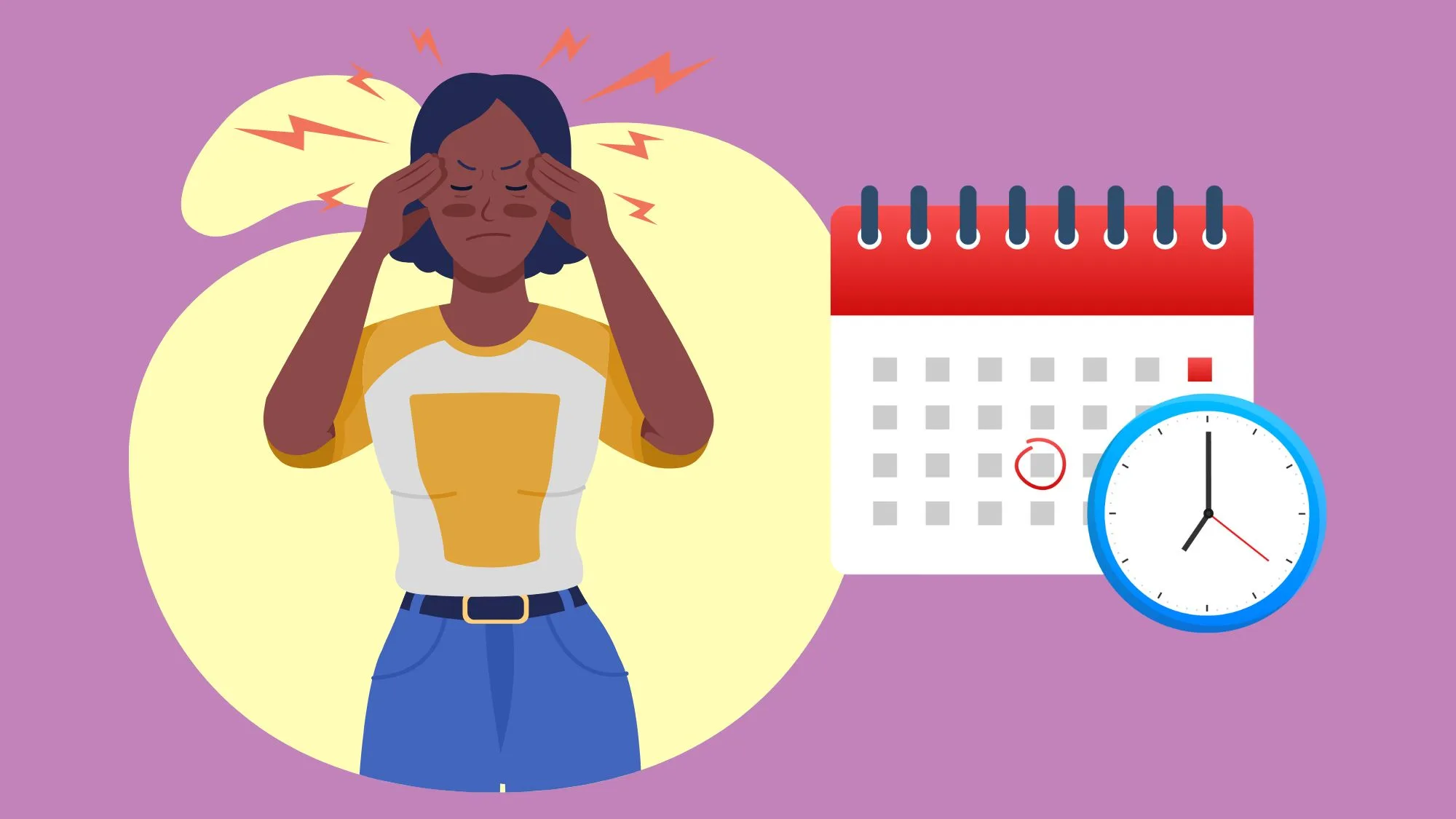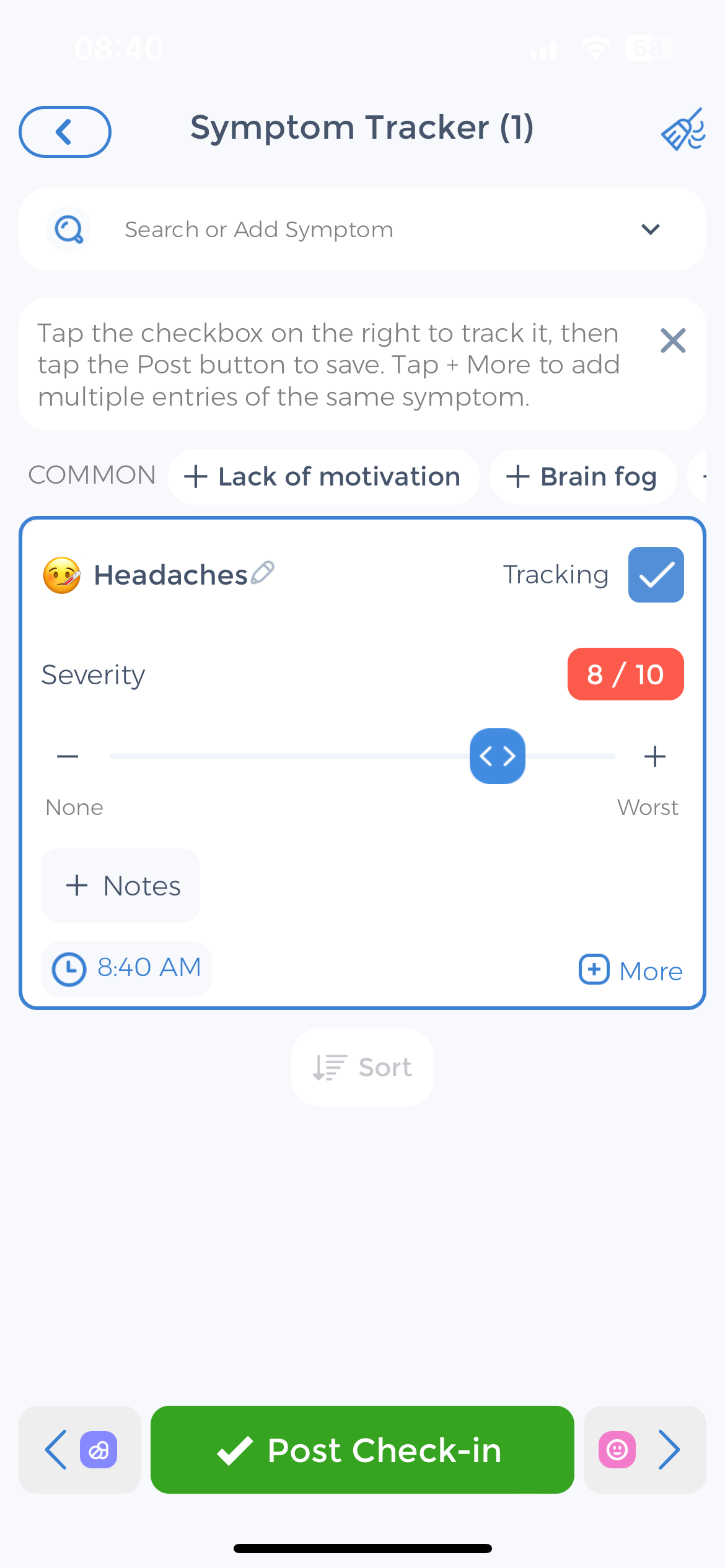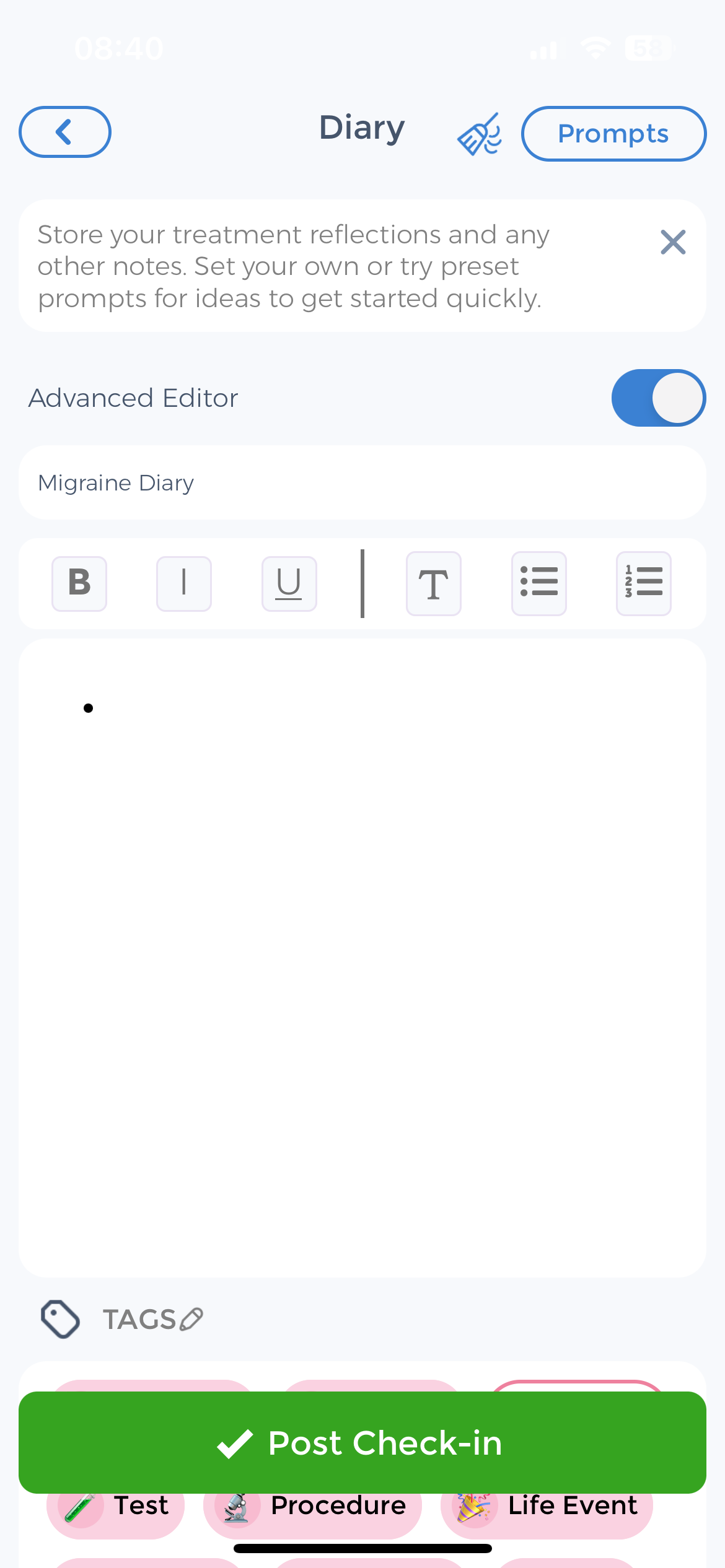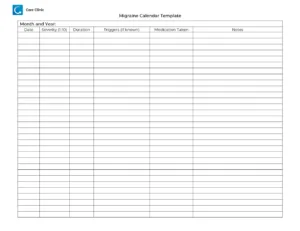
If you suffer from migraines, you know how debilitating they can be. The throbbing pain, sensitivity to light and sound, and nausea can leave you feeling helpless and desperate for relief. Fortunately, there are steps you can take to better understand and manage your migraines.
One valuable tool in your arsenal is a migraine calendar, which can help you track your symptoms, identify triggers, and plan your treatment effectively. In this article, we will explore the benefits of using a migraine calendar and provide you with tips on how to create your ultimate migraine calendar.
Printable Migraine and Headache Calendar
⬇️ Migraine Calendar Template PDF Printable
Understanding Migraines: Causes and Symptoms
Before we delve into the importance of tracking your migraines, let’s first understand what causes migraines and the common symptoms associated with them. Migraines are severe headaches that can last anywhere from a few hours to several days. They are often accompanied by other symptoms, such as nausea, vomiting, and sensitivity to light and sound. While the exact cause of migraines is still not fully understood, experts believe that a combination of genetic and environmental factors play a role in their development.
The Science Behind Migraines
Research suggests that migraines may be caused by changes in the brainstem and its interactions with the trigeminal nerve, a major pain pathway. These changes can lead to the release of certain chemicals, such as hormones and serotonin, which can cause inflammation and dilation of blood vessels in the brain. The resulting pain signals are then sent to the surrounding nerves, causing the intense pain associated with migraines.
Furthermore, recent studies have also shown a potential link between migraines, headaches and the gut microbiome. The gut microbiome refers to the trillions of bacteria and other microorganisms that reside in our digestive system. It is believed that an imbalance in the gut microbiome may contribute to the development of migraines. This fascinating connection between the brain and the gut opens up new avenues for research and potential treatment options for migraine sufferers.
Common Triggers of Migraines
 Identifying triggers can be crucial in managing migraines effectively. While triggers can vary from person to person, some common ones include stress, certain foods (such as aged cheeses and processed meats), hormonal changes in women, changes in sleep patterns, and environmental factors (such as bright lights and strong smells).
Identifying triggers can be crucial in managing migraines effectively. While triggers can vary from person to person, some common ones include stress, certain foods (such as aged cheeses and processed meats), hormonal changes in women, changes in sleep patterns, and environmental factors (such as bright lights and strong smells).
Stress, a well-known trigger for migraines, can have a significant impact on the frequency and severity of headache episodes. When we are under stress, our body releases stress hormones that can affect the blood vessels in the brain, potentially triggering a migraine. Learning stress management techniques, such as deep breathing exercises, meditation, and regular exercise, can help reduce the likelihood of migraines occurring.
In addition to stress, hormonal changes in women can also play a role in migraines. Many women experience migraines during certain phases of their menstrual cycle, particularly during the premenstrual and menstrual phases. Fluctuations in estrogen levels have been linked to migraines, and understanding these hormonal patterns can help women better manage their migraines through lifestyle changes or medication.
Furthermore, certain foods have been identified as common triggers for migraines. Aged cheeses, such as blue cheese and cheddar, contain a substance called tyramine, which is known to trigger migraines in some individuals. Similarly, processed meats, such as hot dogs and sausages, contain nitrites, which can also contribute to migraine attacks. By keeping a food diary and noting any migraines that occur after consuming certain foods, individuals can identify and avoid their personal trigger foods.
How the Environment Can Contribute to Headaches
Environmental factors can also have a significant impact on migraines. Bright lights, such as fluorescent or flickering lights, can be particularly bothersome for migraine sufferers. Strong smells, such as perfumes or chemical odors, can also trigger migraines in some individuals. By creating a migraine-friendly environment, such as using soft lighting and avoiding strong smells, individuals can reduce the duration, frequency, and intensity of their migraines.
By keeping track of your migraines in a calendar, you can identify patterns and begin to understand which triggers may be contributing to your episodes. This valuable information can then be used to develop personalized strategies for managing and preventing migraines, ultimately improving your quality of life.
The Importance of Tracking Your Migraines
Now that we have a better understanding of migraines, let’s explore why tracking your migraines in a calendar is so important. By logging your migraines and associated symptoms, you can gain valuable insights into your condition and make informed decisions about your treatment plan. Here are some benefits of using a migraine calendar:
Benefits of a Migraine Calendar
- Identify triggers: Keeping a record of your migraines allows you to spot patterns and identify potential triggers. For example, you may notice that your migraines often occur after consuming certain foods or during times of increased stress. Armed with this information, you can take steps to avoid these triggers and potentially reduce the frequency or severity of your migraines.
- Track symptoms: In addition to the pain, migraines can have a range of other symptoms, such as aura (visual disturbances), dizziness, and fatigue. By tracking these symptoms in your calendar, you can better communicate with your healthcare provider and ensure that you receive appropriate treatment.
- Monitor treatment effectiveness: A migraine calendar can help you assess the effectiveness of your current treatment plan. By tracking your migraines alongside any medications or lifestyle changes you have implemented, you can see if there are any trends or patterns in your responses. This information can be invaluable when discussing treatment options with your healthcare provider.
How Tracking Diaries Help in Migraine Management
Tracking your migraines in a calendar can also provide you with a sense of control over your condition. By actively monitoring your symptoms and triggers, you can take proactive steps to manage your migraines. It allows you to become an active participant in your healthcare and empowers you to make informed decisions about your treatment options.
Furthermore, tracking your migraines can help you identify potential comorbidities or other health conditions that may be related to your migraines. For example, you may notice that your migraines often coincide with changes in your menstrual cycle or with certain weather conditions. This information is helpful andcan be shared with your healthcare provider, who can then explore potential underlying causes or recommend additional treatments.
In addition to medication, keeping a migraine calendar can help you track the impact of lifestyle factors on your migraines. You may find that certain activities, such as lack of sleep or excessive caffeine consumption, are associated with an increased risk of migraines. By identifying these triggers, you can make adjustments to your daily routine and minimize their impact on your migraines.
Your Headache Diary Can Be a Valuable Tool for Research References
Another benefit of tracking your migraines is the ability to monitor the progress of your condition over time. By recording the duration and intensity of your migraines, you can track any changes or trends. This information can be useful when discussing your condition with your doctor or your healthcare provider, as it provides a comprehensive overview of your migraine history.
Moreover, a migraine calendar can serve as a valuable tool for research purposes. By contributing your own diary data to migraine research studies or patient registries, you can help researchers gain a better understanding of the condition and potentially contribute to the development of new treatments or interventions.
Tracking your migraines in a calendar is an essential practice for anyone living with migraines. It allows you to gain insights into your condition, identify triggers, track symptoms, monitor treatment effectiveness, and take control of your healthcare. By actively participating in your migraine management, you can make informed decisions about your treatment options and improve your overall quality of life.
Creating Your Ultimate Migraine Calendar
Now that you understand the benefits of using a migraine calendar, let’s explore how you can create your own ultimate migraine calendar. Here are some essential elements to include:
Essential Elements to Include in Your Migraine Calendar
- Date and time: Start by recording the date and time of each migraine episode. This will allow you to identify any time-related patterns, such as migraines that occur at a specific time of day or during certain seasons.
- Symptoms: Record the specific symptoms you experience with each migraine episode. This can include the severity of the pain, the presence of aura, and any associated symptoms like nausea or sensitivity to light and sound.
- Possible triggers: Note any potential triggers that you suspect may have contributed to your migraine. This can include stress, certain foods, hormonal changes, or environmental factors.
- Treatment: Document any medications or remedies you use to manage your migraines like aspirin, ibuprofen, and other acute medication. Note the effectiveness of each treatment and any side effects you may experience.
Tips for Consistent and Accurate Tracking
Consistency and accuracy are key when it comes to tracking your migraines. Here are some tips to help you maintain a consistent and accurate migraine diary and calendar:
- Carry your calendar with you: Whether it’s a physical notebook or a mobile app, make sure you always have your migraine calendar with you. This will allow you to log your symptoms and triggers in real-time, increasing the accuracy of your records.
- Be specific: When describing your symptoms, be as specific as possible. Instead of simply noting “headache,” include details such as the location and intensity of the pain.
- Rate pain severity: Consider using a pain scale to rate the severity of your migraines. This can help you objectively track changes in pain over time.
- Utilize reminders: If you tend to forget to update your calendar, set reminders on your phone or use an app that sends alerts to prompt you to record your migraines.
Tracking your migraines consistently and accurately is essential for understanding and managing your condition effectively. By including the essential elements in your migraine calendar and following the tips provided, you can create a comprehensive record that will help you identify patterns, other symptoms triggers, and effective treatments.
When it comes to recording the date and time of each migraine episode, consider using a digital calendar that can automatically timestamp your entries. This will eliminate any potential errors in manually recording the time and ensure the accuracy of your data.
Importance of Pain Description in a Headache Diary
 In addition to recording the severity of your pain, it can be helpful to include a brief description of how the pain feels. This can help you distinguish between different types of migraines and provide valuable information to your doctor.
In addition to recording the severity of your pain, it can be helpful to include a brief description of how the pain feels. This can help you distinguish between different types of migraines and provide valuable information to your doctor.
Remember to update your migraine calendar as soon as possible after each episode. Waiting too long may lead to forgetting important details or inaccurately recalling the intensity of the pain. By logging your symptoms and triggers in real-time, you can ensure the reliability of your records.
Consider color-coding your entries in your migraine calendar to easily identify patterns and trends. For example, you can use different colors to represent different types of migraines or to highlight specific cause. This visual representation can provide a quick overview of your migraine history.
Don’t forget to include any lifestyle factors that may influence your migraines. This can include factors such as sleep patterns, exercise routines, and dietary habits. By tracking these factors alongside your migraines, you may discover additional patterns or triggers that can help you better manage your condition.
Lastly, don’t hesitate to seek professional help if your migraines become more frequently or severe. Book an appointment with your doctor immediately. A healthcare provider specializing in migraines can provide personalized guidance, diagnosis and treatment options based on your specific needs and medical history.
Interpreting Your Migraine Calendar
Now that you have been diligently tracking your migraines, it’s time to interpret the data collected in your migraine calendar. Here are some tips to help you get the most out of your records:
Identifying Patterns and Trends
Review your migraine calendar on a regular basis to identify any patterns or trends. Look for common causes that consistently precede your migraines. For example, you may notice that your migraines often occur after a night of poor sleep or when you consume certain foods. By identifying these patterns, you can take steps to minimize your exposure to triggers and potentially prevent future migraines.
Using Your Migraine Calendar for Treatment Planning
Share your migraine calendar with your doctor to help them develop an individualized treatment plan. Your records can provide valuable insights into your condition and guide your healthcare provider in making informed decisions about medication adjustments, lifestyle modifications, and other interventions.
Incorporating Lifestyle Changes for Migraine Management
In addition to tracking your migraines and working closely with your healthcare provider, there are some lifestyle changes you can make to help manage your migraines effectively. Here are a few examples:
Dietary Adjustments to Reduce Migraines
During your tracking process, you may have identified certain foods that trigger your migraines. Consider eliminating or reducing your consumption of these trigger foods from your diet. Additionally, focus on maintaining a well-balanced diet rich in fruits, vegetables, whole grains, and lean proteins. Staying hydrated throughout the day is also important.
The Role of Exercise and Sleep in Migraine Prevention
Regular exercise and adequate sleep are important for overall health and can play a role as preventive medication. Engage in moderate exercise, such as walking or swimming, for at least 30 minutes a day, most days of the week. Prioritize getting enough sleep, aiming for 7-9 hours of quality sleep every night. Establish a consistent sleep schedule and create a relaxing bedtime routine to promote better sleep.
Tracking your migraines in a calendar can be a powerful tool in understanding and managing your condition. By logging your symptoms, duration, when migraine attacks are, and diagnosis outcomes, you can gain valuable insights and take proactive steps towards managing your migraines effectively. Remember to stay consistent and accurate in your tracking, and don’t hesitate to reach out to your healthcare provider for guidance. With the help of a migraine calendar, you can take control of your migraines and work towards a better quality of life.
Use the CareClinic App to Manage Headache Disorder
Take control of your migraines with the CareClinic App, a comprehensive health management tool designed to help you track and manage your migraines effectively. By using the app, you can easily log the date and time of each episode, record detailed symptoms, and identify potential causes. The CareClinic App also allows you to monitor the effectiveness of your diagnosis, providing a clear picture of what works best for you. With its user-friendly interface, the app simplifies the process of managing your migraine calendar.
Download the CareClinic App and Start Your Headache Diary
With the CareClinic App, expect to gain insights that can lead to improved health outcomes. The app’s features include medication tracking, symptom logging, and the ability to generate reports that you can share with your healthcare provider. By consistently using the CareClinic App, you can establish patterns in your migraine occurrences and make informed decisions about your health. To start taking proactive steps towards better migraine management, install the app today.



